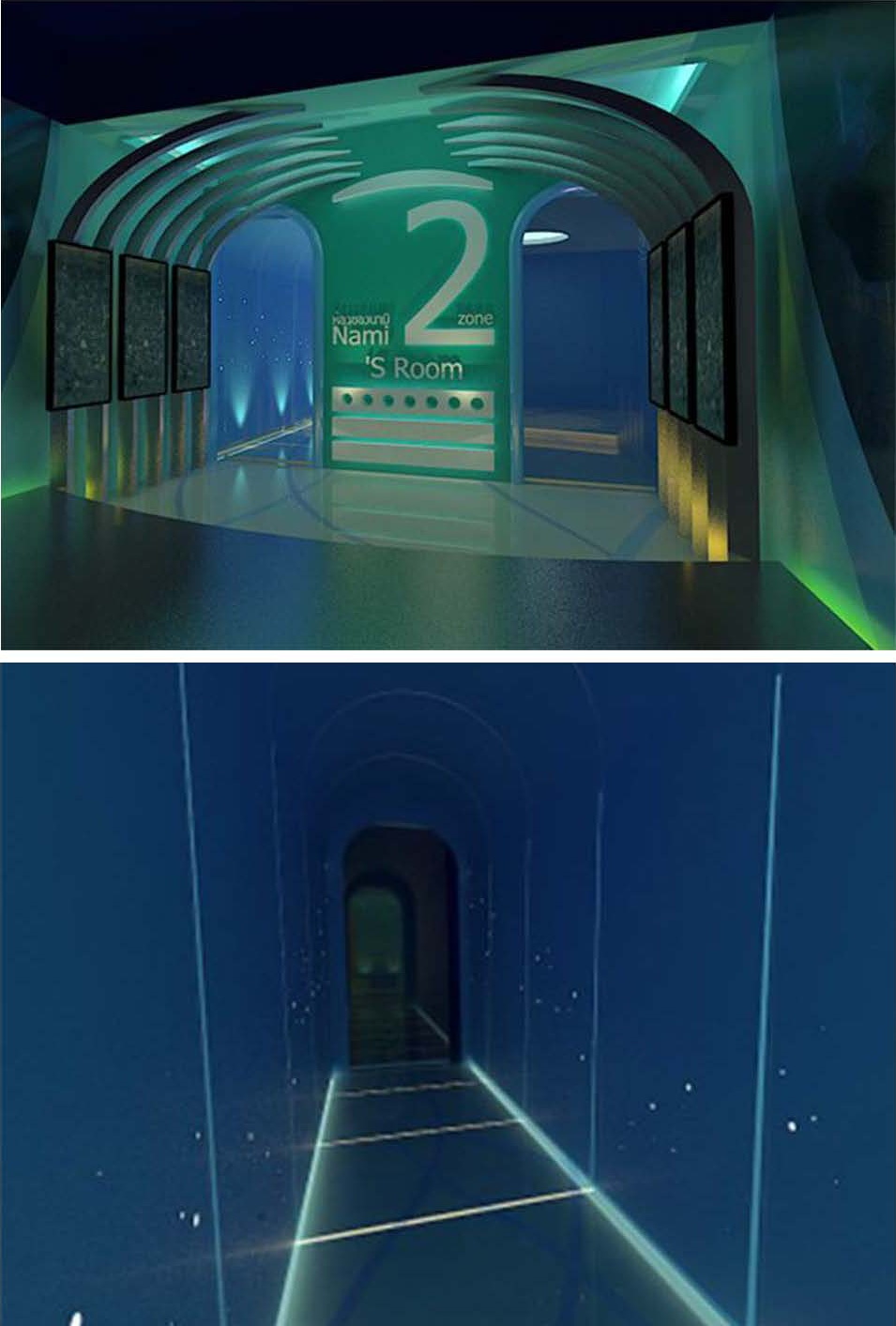The virtual exhibition design for support learning from human-exhibition interaction
Main Article Content
Abstract
This research is focused on the study of communicated factors from the combination of exhibition designing and new technology to enhance the positive experience of the exhibit visitors. The research method was a combination of qualitative and quantitative research. The research tool refer to the in-depth interview from the three expert groups to know the virtual exhibition design factors and online questionnaires coupled with a 3D virtual exhibition model to test the perception and understanding of the exhibit visitors. The results found that the reactions of exhibition visits can be divided into two categories including perception and emotion. Effective exhibits design methods must be based on design principles and use of design factors such as decoration, media or technology, spatial relationship, light efficiency and decoration materials. Other factors, such as exhibit objects, text information, physical influence, aesthetics, color, and social influence, are also a strategy to promote exhibit visitor awareness. In addition, exhibition designers need to focus on 5 main points including content, language, usability and design. These main points make the design of virtual exhibitions achieve the goals of objectives that designers determine.
Article Details

This work is licensed under a Creative Commons Attribution-NonCommercial-NoDerivatives 4.0 International License.
References
Alt, M.B., et al. (1988). The design of educational exhibits (2nd Eds). London: Routledge and CRC Press.
Baker, J. (1987). The role of the environment in marketing services: the consumer perspective. In Czepiel, J., Congram, C. & Shanahan, J. (Eds.). The services challenge: integrating for competitive advantage. (pp.79–84). Chicago: American Marketing Association.
Bitgood, S. & Patterson, D. (1987). Principles of exhibit design. Visitor Behavior, 2(1), 4–6.
Bitgood, S. & Patterson, D. (1993). The effects of gallery changes on visitor reading and object viewing time. Environment and Behavior, 25(6), 761-781.
Bitgood, S., Patterson, D. & Benefield, A. (1988). Exhibit design and visitor behavior: empirical relationships. Environment and Behavior, 20(4), 474-491.
Bonis, B., et al. (2007). Personalization of content in virtual exhibitions. Proceedings of the Second International Conference on Semantic and Digital Media Technologies (SAMT) 2007 (pp.172-184). Heidelberg: Springer.
Charitos, D., et al. (2000). An approach to designing and implementing virtual museums. Proceedings of the 7th UK VR-SIG Conference (pp.1-8). Glasgow: n.p.
Charitos, D., et al. (2001). Designing a virtual museum within a museum. Proceedings of the 2001 Conference on Virtual Reality, Archeology, and Cultural Heritage (pp.1-8). New York: Association for Computing Machinery (ACM).
Chuan, C.H., et al. (2006). A new communication model in the natural history museum. Proceedings of the 2006 meeting of INTERCOM (pp.1-27). Taipei: n.p.
Deckers, E., et al. (2012). Designing for perceptual crossing: applying and evaluating design notions. International Journal of Design, 6(3), 41–55.
Falk, J.H. & Dierking, L.D. (2000). Learning from museums: visitor experiences and the making of meaning. California: AltaMira Press.
Forrest, R. (2013). Museum atmospherics: the role of the exhibition environment in the visitor experience. Visitor Studies, 16(2), 201-216.
Francis, D.K.C. & Binggeli, C. (2018). Interior design illustrated (4th Eds). New York: John Wiley & Sons Inc.
Garrett, J.J. (2011). The elements of user experience: user-centered design for the web and beyond (2nd Eds). California: New Riders.
Melton, A.W. (1972). Visitor behavior in museums: some early research in environmental design. Human Factors, 14(5), 393-403.
Moona, H.S., Kima, J.K. & Ryu, Y.U. (2013). A sequence-based filtering method for exhibition booth visits recommendations. International Journal of Information Management, 33(4), 620–626.
Peart, B. (1984). Impact of exhibit type on knowledge gain, attitudes, and behavior. Curator, 27(3), 220-237.
Praphruetdi, P. (2019). Karn nam sanoe theknoloyi samueanching nai phiphitthaphan silapa. (In Thai) [The use of virtual reality in art museum]. Humanities, Social Sciences and arts, 12(3), 1104-1118.
Van Bueren, E.M. (2009). Greening governance: an evolutionary approach to policy making for a sustainable built environment. Netherlands: IOS Press.
Wolfgang, F.E.P., Rabinowitz, H.Z. & White, E.T. (1988). Post-occupancy evaluation. New York: Van Nostrand Reinhold.


